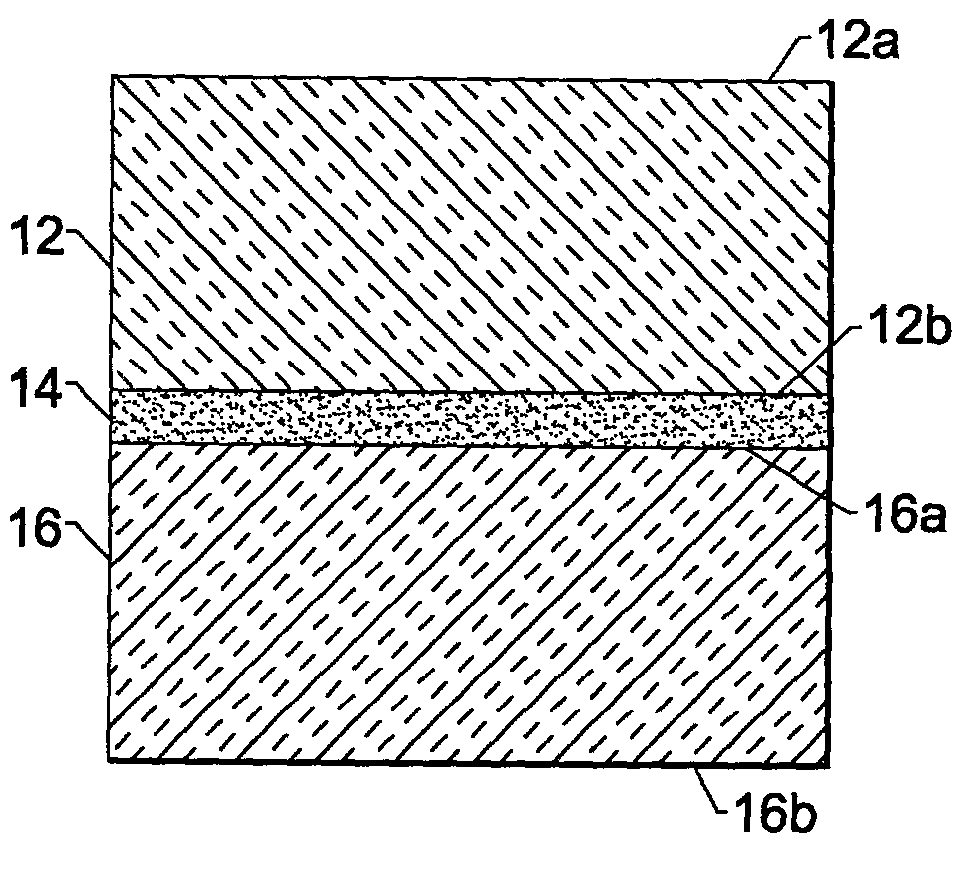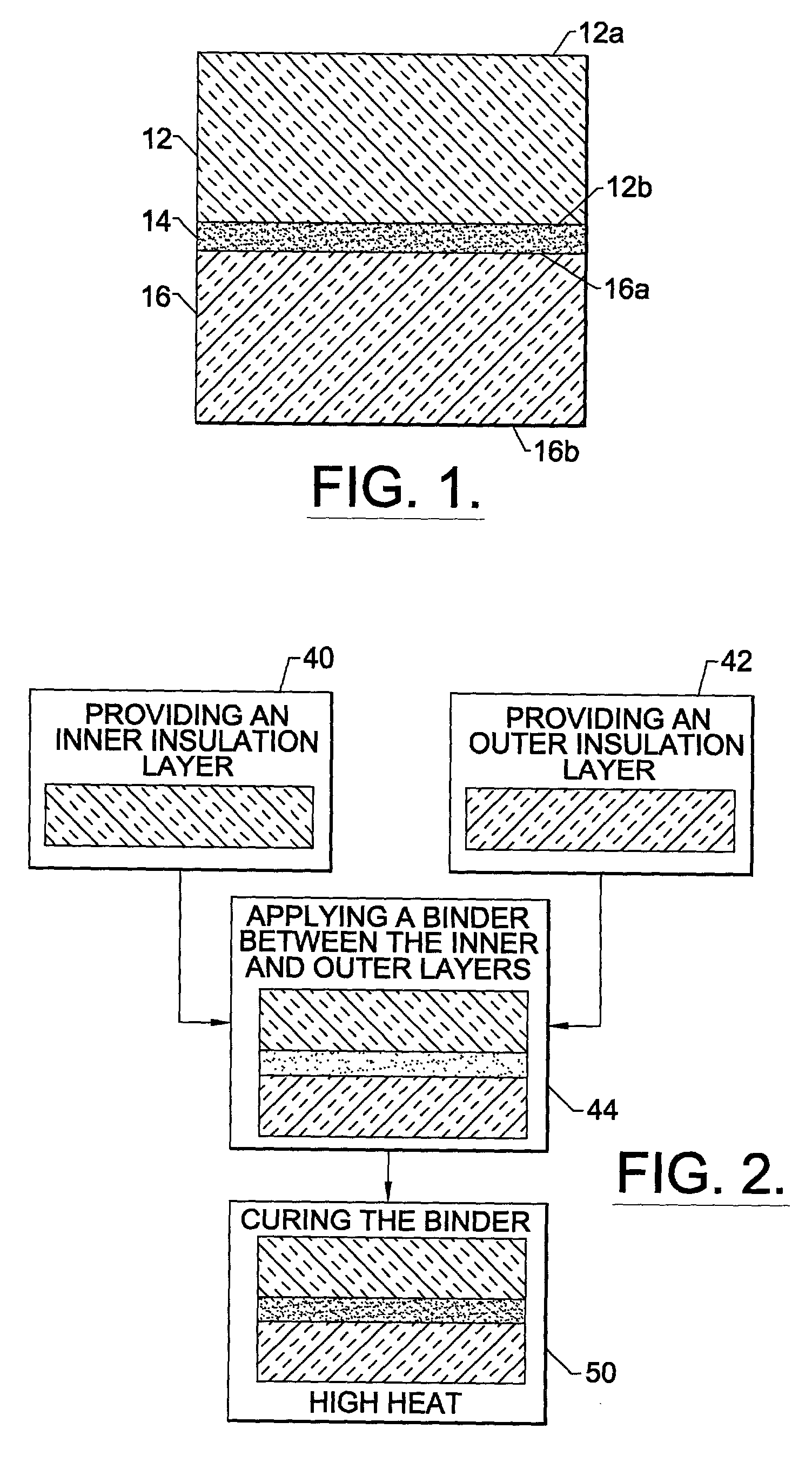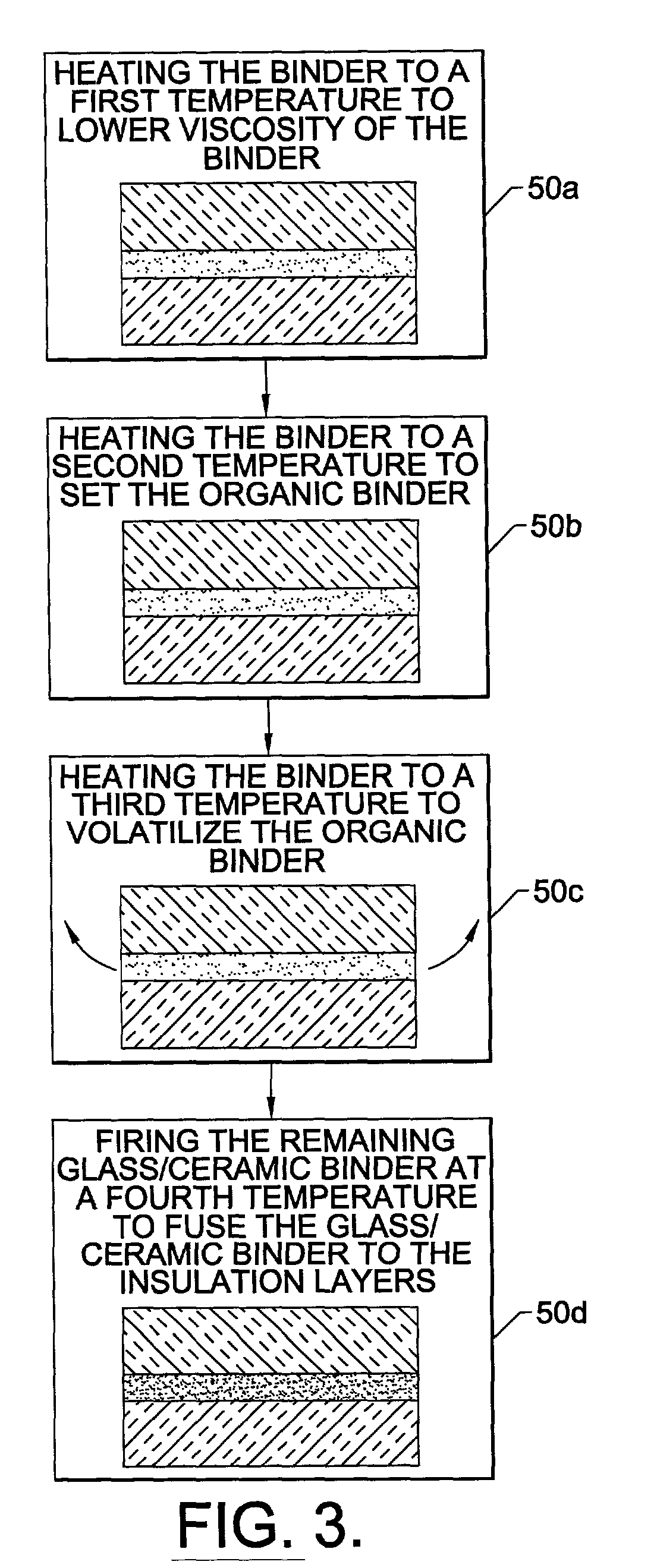Multi-layer ceramic fiber insulation tile
a ceramic fiber and insulation tile technology, applied in the field of ceramic fiber tile insulation components, can solve the problems of unsuitable vehicle surface for low density aetb, unsuitable vehicle surface for cosmonautic vehicles, and high thermal conductivity, and achieve the effects of improving thermal barrier tiles, high temperature durability, and high strength
- Summary
- Abstract
- Description
- Claims
- Application Information
AI Technical Summary
Benefits of technology
Problems solved by technology
Method used
Image
Examples
example 1
[0035] Two small samples of AETB insulation tile having different densities were prepared, and a flat surface was machined on each sample.
[0036] A binding mixture was prepared using RCG glass composition composed of 95 wt % RCG glass and 7 wt % Methocellulose organic binding material. A denatured alcohol solvent was used to adjust viscosity.
[0037] A coating of the binding mixture was sprayed on the flat surfaces of each tile and the coated tiles were allowed to sit at room temperature for a period of 30 minutes. The two respective tiles were mated together. A small weighted object was placed upon the top surface of the top insulation layer in order to hold the top layer in intimate contact with the bottom layer.
[0038] The tile assembly was slowly heated to about 350.degree. F. for a period of 30 minutes. The assembly was then moved to a furnace, where it was heated slowly to about 1000.degree. F. At approximately 800.degree. F., the heating rate was slowed such that the temperature ...
example 2
[0039] Two small samples of AETB insulation tile having different densities were prepared, and a flat surface was machined on each sample.
[0040] A binding mixture was prepared using 95 wt % Ferro Electronic Glass EG0002, ceramic bonding material, and 5 wt % ethocellulose organic binding material. A butyl carbitol acetate solvent was used to adjust the viscosity of the bonding mixture to a medium paste.
[0041] A coating of the binding mixture was applied to the flat surfaces of each tile and the coated tiles were allowed to sit at room temperature for a period of 30 minutes. A second coating of the binding mixture was applied to the flat surfaces, and the flat surfaces of the two respective tiles were mated together. A small weighted object was placed upon the top surface of the top insulation layer in order to hold the top layer in intimate contact with the bottom layer.
[0042] The tile assembly was slowly heated to about 350.degree. F. for a period of 30 minutes. The assembly was the...
example 3
[0043] Two small samples of AETB insulation tile having different densities were prepared, and a flat surface was machined on each sample.
[0044] A binding mixture was prepared using 90 wt % Ferro Electronic Glass EG0002 ceramic bonding material, and 10 wt % epoxy organic binding material. Acetone was used as a solvent to adjust the viscosity of the bonding mixture to a medium paste.
[0045] A coating of the binding mixture was applied to the flat surfaces, and the flat surfaces of the two respective tiles were mated together. The assembly was placed in a vacuum bag apparatus and a light vacuum was applied in order to hold the top layer in intimate contact with the bottom layer.
[0046] The tile assembly was slowly heated to about 350.degree. F. for a period of 30 minutes. The assembly was removed from the vacuum bag and moved to a furnace, where it was heated slowly to about 1000.degree. F. At approximately 800.degree. F., the heating rate was slowed such that the temperature was increa...
PUM
 Login to View More
Login to View More Abstract
Description
Claims
Application Information
 Login to View More
Login to View More - R&D
- Intellectual Property
- Life Sciences
- Materials
- Tech Scout
- Unparalleled Data Quality
- Higher Quality Content
- 60% Fewer Hallucinations
Browse by: Latest US Patents, China's latest patents, Technical Efficacy Thesaurus, Application Domain, Technology Topic, Popular Technical Reports.
© 2025 PatSnap. All rights reserved.Legal|Privacy policy|Modern Slavery Act Transparency Statement|Sitemap|About US| Contact US: help@patsnap.com



